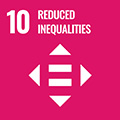- Docente: Anna Sirinian
- Credits: 6
- SSD: L-OR/13
- Language: Italian
- Teaching Mode: In-person learning (entirely or partially)
- Campus: Bologna
-
Corso:
Second cycle degree programme (LM) in
History and Oriental Studies (cod. 8845)
Also valid for Second cycle degree programme (LM) in Cultural Anthropology and Ethnology (cod. 0964)
Second cycle degree programme (LM) in History and Oriental Studies (cod. 8845)
Learning outcomes
By the end of the course the student will reach a mid-level competence in the Armenian literature and language; he will be able to discuss the subjects critically, employing the appropriate terminology with suitable and up to date bibliographical references.
Course contents
The course aims to increase the student's knowledge about Armenian language, history and literature. Passages from the "History" by Agathangelos (5th century) will be translated by students, together with passages from modern literary works. Some of these translations will contribute to form an anthology of Armenian literature in Italian language. Particular attention will be paid to Etchmiadzin, the holy city of the Armenians.
Attendance at the lessons is strongly recommended. Those students who cannot attend the course for exceptional reasons, are invited to contact the lecturer at least six months before the exam.
Starting date of the lessons: Wednesday 31 January 2024.
Readings/Bibliography
Bibliography for attending students:
1) D. Sakayan, Eastern Armenian for the English-speaking world: a contrastive approach, Yerevan, State University Press, 2007.
2) S. Hairapetian, A History of Armenian Literature from Ancient Times to the Nineteenth Century, Caravan Books, Delmar, New York, 1995 (as for those authors studied at lessons).
3) Vagharshapat, OEMME Edizioni, Venezia 1998 (Documents of Armenian Architecture/Documenti di architettura armena, 23).
4) Texts in electronic format published on Virtuale.
Bibliography for non-attending students:
Non-attending students are requested to follow the instructions previously expressed. They will complement the study of the following volumes:
1) D. Sakayan, Eastern Armenian for the English-speaking world: a contrastive approach, Yerevan, State University Press, 2007
2) S. Hairapetian, A History of Armenian Literature from Ancient Times to the Nineteenth Century, Caravan Books, Delmar, New York, 1995 (choice of authors indicated by the lecturer)
3) Vagharshapat, OEMME Edizioni, Venezia 1998 (Documents of Armenian Architecture/Documenti di architettura armena, 23)
with materials related to the study of Armenian literature, language and grammar agreed with the lecturer.
Teaching methods
Traditional lessons, exercises for learning Armenian grammar.
Assessment methods
Students who attend at least 75% of the lessons are considered to be attending.
The exam will be conducted orally and will assess the student's command of the material studied in the course or referred to in bibliography. Some samples in Armenian script (regarding words, simple sentences or grammatical elements) can be required too.
Top marks will be awarded to a student displaying an ability to summarise, compare to each other and critically discuss topics raised in the course, including linguistic elements.
Average marks will be awarded to a student who has memorized the main points of the material and is able to summarise them satisfactorily, while failing to display a complete command of the appropriate terminology.
Training gaps and / or inappropriate language will lead to votes that will not exceed the sufficiency.
Training gaps, inappropriate language, lack of guidance within the materials offered during the course will lead to failed assessments.
Notice reserved for Master's degree students of the course ARMENIAN LANGUAGE AND LITERATURE II (C.I.) (LM)
This 6 CFU course can be chosen as a part of the 12 CFU Integrated Course "Armenian Language and Literature II (C.I.) (LM)". If the student has the Integrated Course (12 CFU) in his/her study plan, the final grade will result from the arithmetic average of the marks obtained in the two parts ("Armenian Language and Literature 2A (LM)" and "Armenian Language and Literature 2B (LM)").
Teaching tools
Use of the whiteboard, computer and informatic resources.
Office hours
See the website of Anna Sirinian
SDGs

This teaching activity contributes to the achievement of the Sustainable Development Goals of the UN 2030 Agenda.
